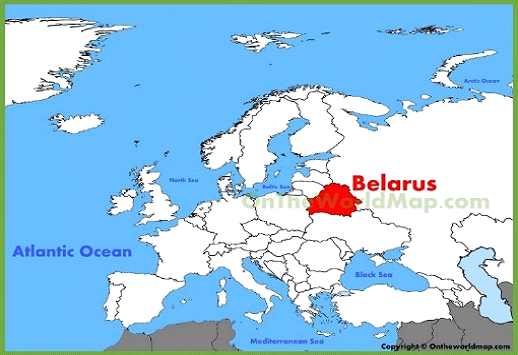
Belarus is one of, if not the only, state in Europe to not conform to the western ideals of ‘modernisation.’ It has stuck to its Soviet route and has sort of, in its own way carved a new path towards development. It is quite different in terms of its place in the world. As such, it remains a major country of interest to me. This article outlines the current situation of Belarus-politically and economically-and what factors led to this situation.
Belarus is in Eastern Europe and borders Russia, Ukraine, Poland, Lithuania, and Latvia. It had previously been part of the Soviet Union and maintains strong ties with Russia. It has a highly centralised and authoritarian form of government. It has had the same head of state ever since its independence back in 1991. It ranks low in terms of civil liberties and freedom of the press and is the only country in Europe to still use capital punishment. It still employs several Soviet era policies like large-scale public ownership of land. It has a Human Development Index (HDI) of 0.808, which classifies as “high.”

China (right)
Belarus has come under international criticism for its lack of election transparency-with numerous countries going as far as not recognising the election results and publicly scrutinizing them. The main scrutiny has been from the West, which is unsurprising since Belarus today remains loyal to its Soviet and later Russian roots. Belarus has allegedly committed several human rights violations including mistreatment and torture of anti-regime protestors.
Belarus, by constitution, has separation of powers, but in practice it is an autocracy, with judicial independence being meagre and subject to political interference. Its relationship with the U.S. has been strained, to the level that the countries do not have ambassadors in the other country. Sino-Belarussian relations have improved.
And now, for the elephant in the room-Russia. In 1996-99, a supranational confederation called the union of Russia and Belarus was created through a series of treaties. These treaties aimed to establish monetary union, equal rights, single citizenship, and a common foreign and defence policy. However, the future of the union has become uncertain due to several factors, including Belarus’s repeated postponement of monetary union, the absence of a set date for the referendum on the draft constitution, and a disagreement over petroleum trade.

Belarus continues to be a mystery that eludes many. It remains an oddball in terms of its relationship with the EU, and with NATO. It refuses to conform to the dominant western ideology and instead cooperates with the Russians.
Economically, Belarus is classified as a developing country. It is one of the most equal countries in the world, economically which means that income is divided roughly equally among its citizens. Conversely, it has failed to protect labour laws leading to unemployment. Women hold slightly more jobs than men in Belarus. Belarus has also faced high rates of inflation many a times, pushing their economy into a crisis. To conclude, there is sort of a mixed reality that exists regarding the economic nature of Belarus.
In terms of its relationship with India, it remains mature. Both countries are a part of the Non-Aligned movement and have had a socialist inclination at some point or the other in their history. India and Belarus maintain strong links in terms of trade and tourism.

What about it’s role in the ukraine conflict
Belarus, like India, chooses to retain close ties with Russia. However, it has not progressed in stature as India has.
The difference lies in the fact that while India choses to be a world leader through active participation on the world stage, Belarus works more or less, in isolation or in sync with Russia.
The writer has indeed given a comprehensive picture of the country in a nutshell. Kudos!
Belarus has historically acted as a buffer zone between NATO and Russia. NATO tried to go around this buffer by making Ukraine a member country, which directly led to the Russian offensive. Moreover, Belarus has cooperated with Russia militarily and many Ukrainian refugees have escaped to Belarus.
very informative, amazing read!
Thank you!
So amazing
Thank you